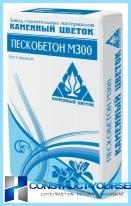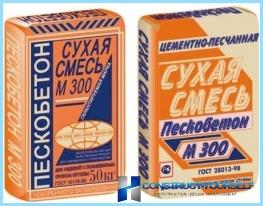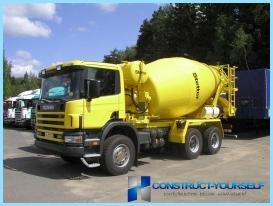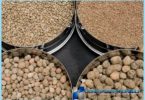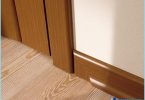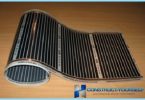The contents
When repairing or building a house, sooner or later the question arises about the floor screed. The process of filling and floor leveling has always been and remains quite time-consuming. Many fans who build «for myself» simply afraid of the word «screed» and try as long as possible to delay the pouring of the floor. This article will help you to understand some of the nuances and to reduce fears and prejudices about floor screed.
Selection of mix to the screed ↑
The basis of any screed is a mortar. Today, there are several types of how relatively old, time-tested and new, experimental.
The compositions of the mixtures for floor screeds are divided by purpose:
- alignment for processing;
- self-leveling.
Both, in turn, are of the following types:
- cement;
- mixes;
- gypsum.
Cement mix ↑
They are mixed based on hydraulic binders. Their composition is in addition to the sand expanded clay gravel or granite chips factionalism from 0.5 to 2.5 mm. the recommended thickness of such screed about 45 mm. is Designed for initial alignment indoors. Has a gray color and rough surface.
Strength of cement mortar depends on the water cement ratio, the lower it is, the more dense screed.
Mixes ↑
Sand concrete mixtures are produced in three categories – M300, and M400 М350. They are universal, as are used in household and industrial constructions.
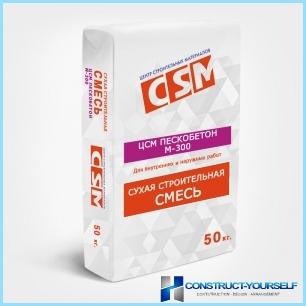
In the basic composition of dry mixture included:
- cement PC 400 or PC 500 D20;
- dried sand, ratefraction, particle size of 0.1-8 mm;
- a large part of the sand with diameter from 1,5 to 3 mm.
For the mixture of M400, which is ultrasoni and is mainly used for industrial structures (dams, shelters, airfields), use a special inclusion that depends on the brand manufacturer sand concrete mix.
The main additives are:
- screenings or chippings of granite;
- washed river sand for construction;
- various plasticizers;
- components for corrosion and a quick footnote.
- mineral powder.
A distinctive feature of the sand concrete mixture is the willingness to full operation within 48 hours after pouring.
Important points when mixing:
- to prepare the dough you need using only cool water;
- you must fill the mixture in water, but not water in the mixture;
- the peskobeton M-300 is recommended for screeds from 10 to 15 mm. In structures from 30 mm is necessary to use reinforcing mesh;
- involved solution hardens in 2 hours.
A mixture of plaster ↑
An important feature of the gypsum compounds is their short period of curing and quickly ready for use. They are composed of fine fibrous filler, and additives that make the surface more durable. A mixture based on gypsum have the ability of regulating humidity by absorbing the excess and giving the lack. They are used only in the premises.
Gypsum – excellent heat insulator, not dusty at work and environmentally friendly. The problem with these mixtures is that they cannot be used in rooms with povyshennoi humidity – bathrooms and kitchens because of the ability to absorb moisture.
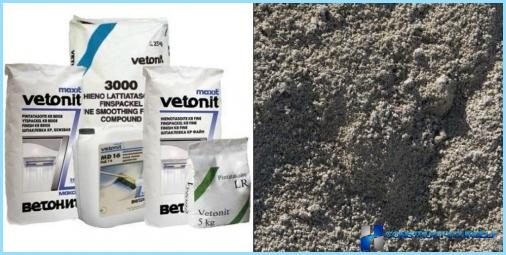
All mixes for screeds sold in two versions:
- dry made from bulk materials and are prepared by adding water and mixing the solution;
- dry mixes that are sold already mixed with water for a very soft consistency.
Advantages of buying ready-made solution ↑
By purchasing a ready solution, it is necessary to check the concrete floor for flatness, and also consider the design height. Based on these parameters, choose either concrete or a cement screed. Cement is more suitable for smooth surfaces, bumpy concrete, rough sex.
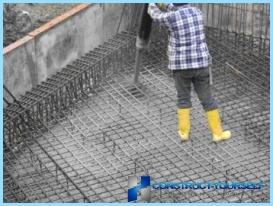
Ready solutions have several advantages:
- minimum consumption of time because of the ease and speed of casting;
- the minimal consumption of money due to the low cost;
- cost savings on maintenance of flooring because of the durability, shock tolerance, and resistance to temperature drops.
Important nuances when pouring self-leveling mix for floor ↑
It is a mistake to believe that «self-leveling coating» – this is the best option for those who are not confident in their abilities relative to create a perfectly smooth surface. In fact, before applying the mix for self-levelling screed (levelling mixes, level-mass) must be carefully prepared concrete floor. The levelling mixes are used only in the final coating of the screed, that is, such mixtures do not want to take for a basic screed.
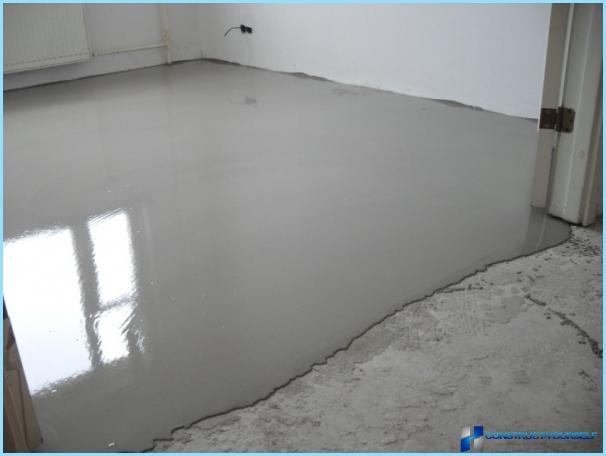
The basic composition of savvyauntie:
- the binder (cement or plaster);
- ratefraction filler;
- special inclusions for greater plasticity (for ease of installation, speed or slow the setting time, viscosity, etc.);
- a special paste and dyes.
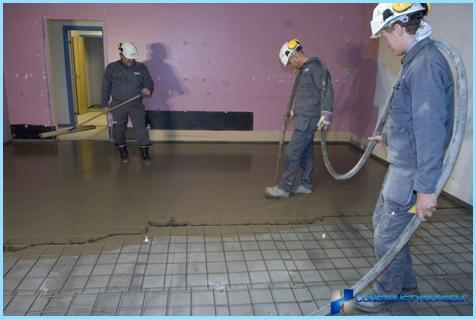
Important nuances when pouring self-leveling mix for floor:
- before taking the compound for self-levelling layer necessary to assess the quality of existing ties;
- it is also necessary to ensure durability the concrete base. To do this, just to scratch the surface;
- assessing the strength of the base, noting the inclination in the horizontal plane, taking into account the materials used for the screed and future loads in the room, apply nivelir-mass, and composition;
- the resulting gaps in the ties, first break to a depth of 2-2,5 cm, and then across they make long scratches 15 cm through 25 cm of the Whole tie cleaned from dirt and debris;
- dry and procidentia the debris from the gaps and cracks fill with fresh solution;
- priming it is necessary a thin layer to avoid stains.
When the soil dries, it is very important to check its waterproofing. The primed surface of the screed pour a small amount of water and “by eye” to determine its quantitative changes. If the liquid soaks into the flooring, you will have to apply the primer again.
Beacons set every 1-1,5 m. To do this put special strips that help to determine the height of the screed and use a glued galvanized profiles, which will remain in the tie, performing special functions in order to avoid deformation of the surface and breaks ties.
During the pouring of the finishing screed nivelir-weight, the room temperature should be no more than 30 degrees and the humidity not more than 65%.
Before use, the dry ingredients mixed in a small volume of water (depends on manufacturer) in a dry container, use a drill at low speed or rastvoromeshalke.
There are two types of application samovyravnivayuschihsya mixture: manual (wide profile with notches) and machine.
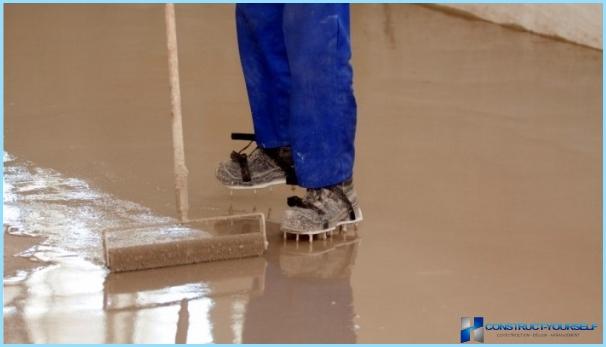
In the absence of basic skills in working with level-masses, will have to prepare the mixture in small pieces, and use the mixture with prolonged curing. To connect parts of the solution must be no later than 15-20 minutes. Freshly prepared mixture begins to fill from the wall, away from the exit, then carefully stretch it over the entire area of a wide spatula or rule. Even spreading mass usually achieve, exposing control beacons.
When choosing a mixture for screeds it is important to understand that each of them is designed for certain stages of works and their location to maximize the use of all positive characteristics of each mixture for screeds.

